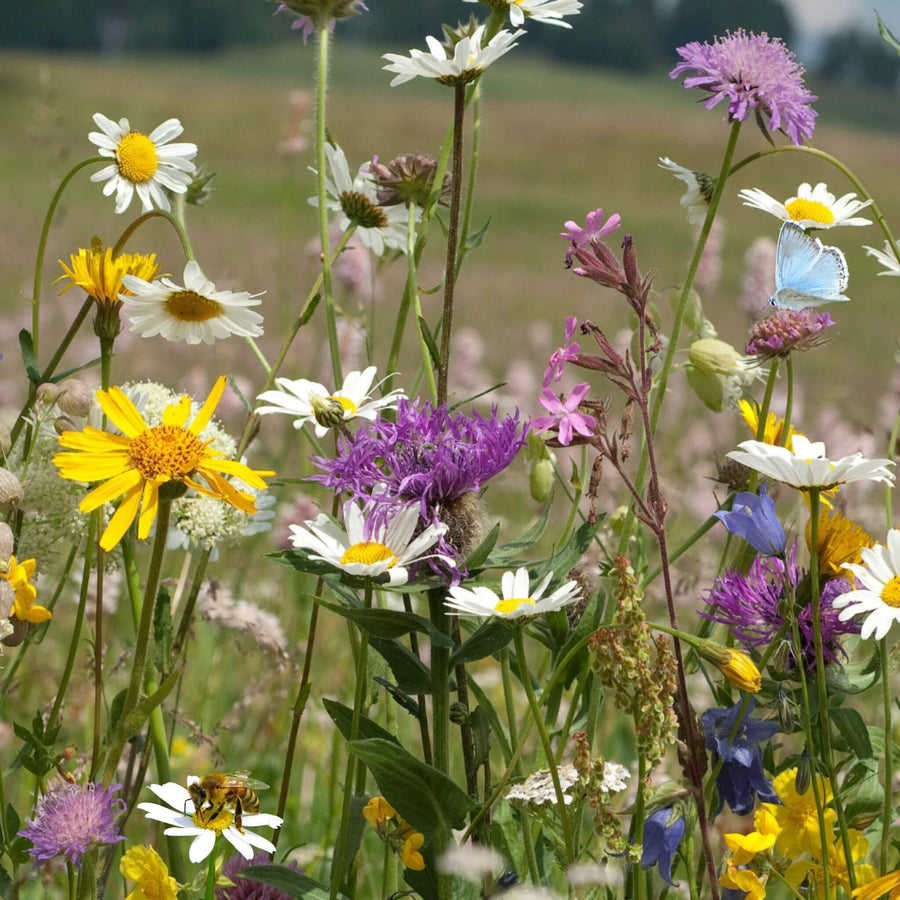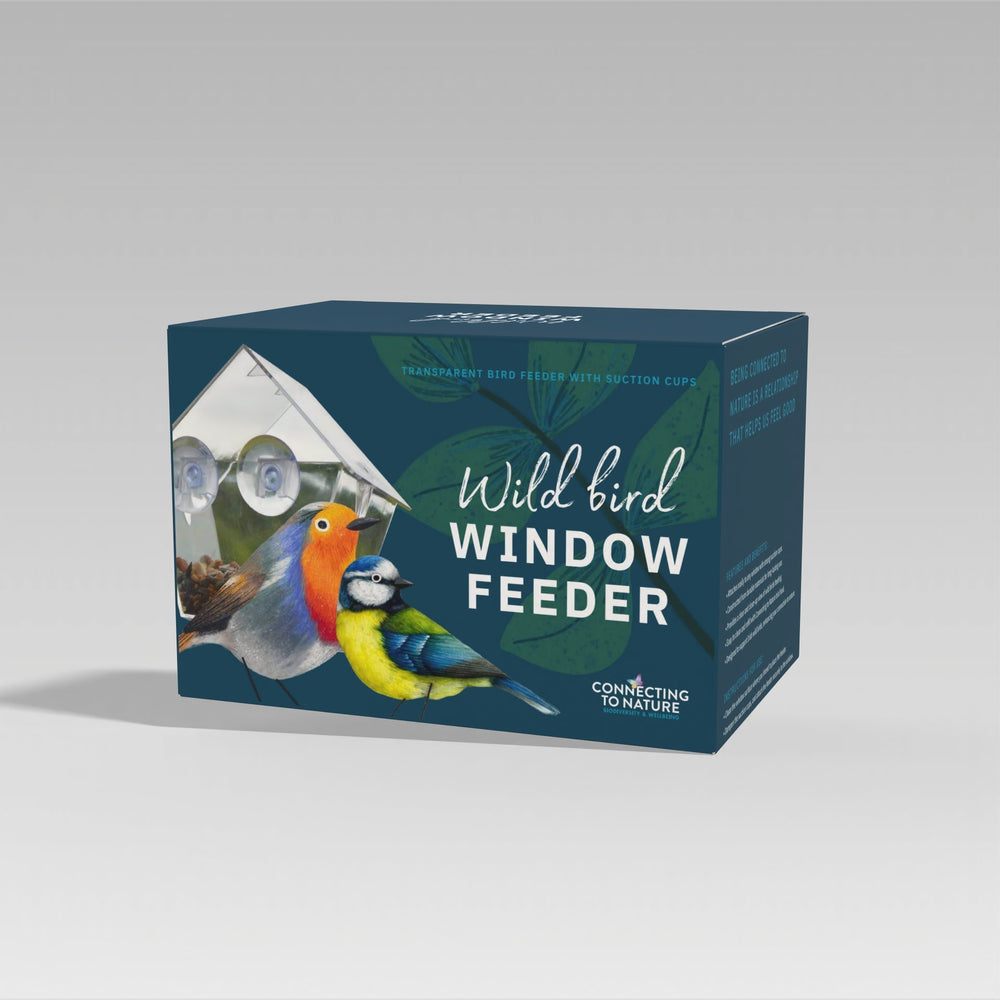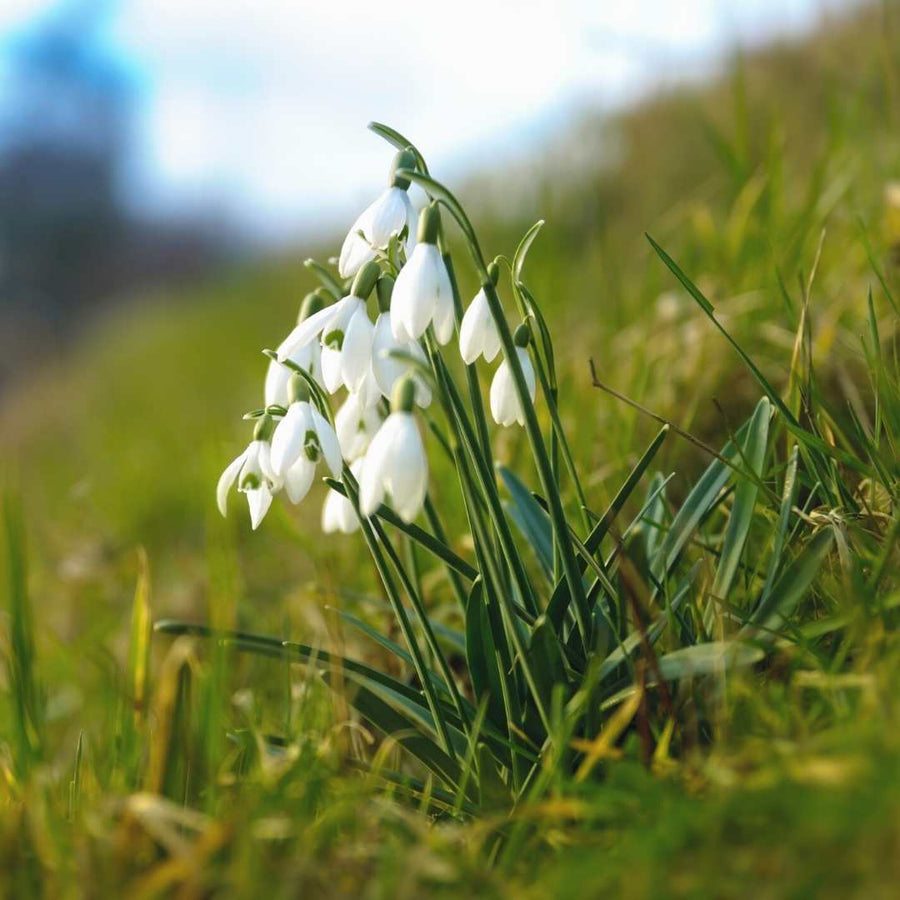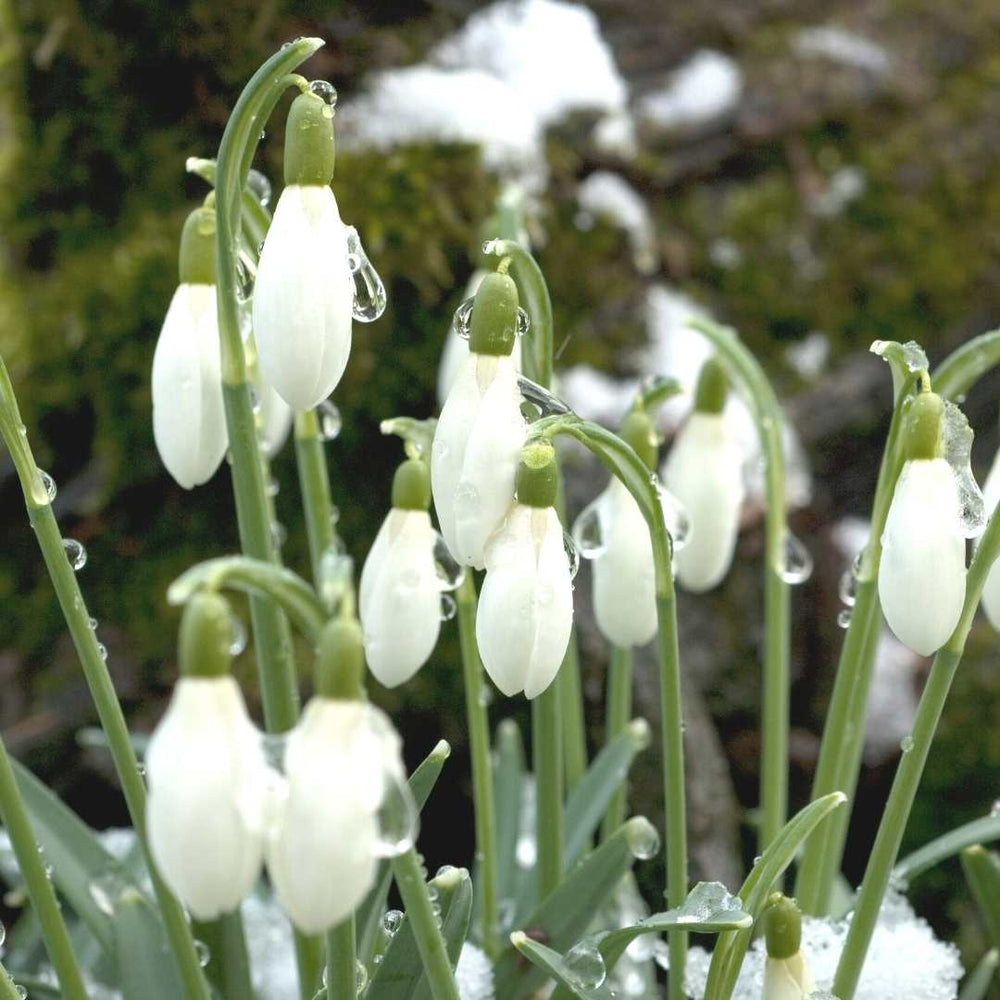Galanthus Nivalis are the Irish Native variety of Snowdrops, naturalised in Ireland, and recorded in cultivation during the 16th century in Ireland. One of the first flowers to show its wonderfully delicate flower head before Spring. despite it's nickname 'Fair Maids of February' it first blooms in January, blooming sometimes right through to March, an early sign that the short days of winter are soon to be gone.
Its hardened leaves have a sharp pointed tip, allowing them to effectively break through the frozen ground in late winter.
This Spring (late winter) flowering bulb is a low-growing bulbous herbaceous perennial which has the ability to spread and form large colonies surrounding the area the original Snowdrop bulbs were planted. Adored by pollinators such as bees and butterflies.
How to grow Snow Drops in Ireland?
Choose an area with light shade, such as under deciduous trees or shrubs, or a plant in lawns, woodland areas, or even containers and transplant each year.
The best time to sow Snowdrop bulbs in Ireland is Autumn between September and December before the ground freezes over.
Snowdrops like moist, well-drained soil, but ensure it doesn't dry out over summer. When planting, you may add some sand for drainage.
Prepare holes in the soil approx 3 times the size of the snowdrop bulbs in depth, a dibber will help you achieve the correct dept.
The Snowdrops colonies will multiply on their own accord under the soil, however, we do recommend dividing them 'in the green' every three years to grow the colony. Lift plants that are 'in the green' after flowering while the soil is moist, carefully teasing the clumps apart by hand, careful not to damage the roots. Then replant the divided clumps.
This section doesn’t currently include any content. Add content to this section using the sidebar.

















